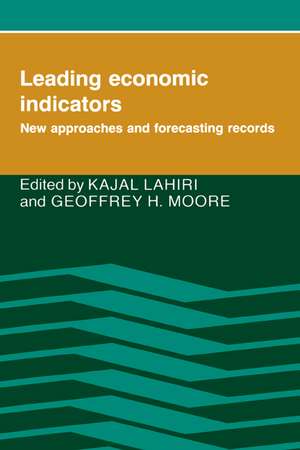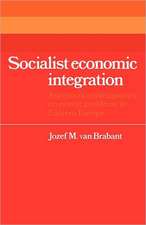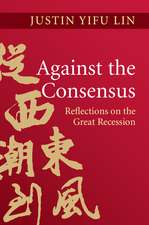Leading Economic Indicators: New Approaches and Forecasting Records
Editat de Kajal Lahiri, Geoffrey H. Mooreen Limba Engleză Paperback – 29 oct 1992
Preț: 461.51 lei
Preț vechi: 518.54 lei
-11% Nou
Puncte Express: 692
Preț estimativ în valută:
88.31€ • 91.61$ • 73.64£
88.31€ • 91.61$ • 73.64£
Carte tipărită la comandă
Livrare economică 27 martie-10 aprilie
Preluare comenzi: 021 569.72.76
Specificații
ISBN-13: 9780521438582
ISBN-10: 0521438586
Pagini: 484
Ilustrații: 71 b/w illus. 75 tables
Dimensiuni: 152 x 229 x 27 mm
Greutate: 0.72 kg
Editura: Cambridge University Press
Colecția Cambridge University Press
Locul publicării:New York, United States
ISBN-10: 0521438586
Pagini: 484
Ilustrații: 71 b/w illus. 75 tables
Dimensiuni: 152 x 229 x 27 mm
Greutate: 0.72 kg
Editura: Cambridge University Press
Colecția Cambridge University Press
Locul publicării:New York, United States
Cuprins
Preface; 1. Editors' introduction; Part I. New Concepts and Methods: 2. Toward a theory of leading indicators Frank de Leeuw; 3. A time-series framework for the study of leading indicators Salih N. Neftci; 4. A probability model of the coincident economic indicators James H. Stock and Mark W. Watson; 5. An international application of Neftci's probability approach for signalling growth recessions and recoveries using turning point indicators Michael P. Niemira; 6. On predicting the stage of the business cycle Roy H. Webb; 7. Bayesian methods for forecasting turning points in economic time series: sensitivity of forecasts to asymmetry of loss structures Arnold Zellner and Chansik Hong; 8. New developments in leading economic indicators Geoffrey H. Moore; Part II. Forecasting Records and Methods of Evaluation: 9. Forecasting cyclical turning points: the record in the past three recessions Stephen K. McNees; 10. Turning point predictions, errors, and forecasting procedures Hermon O. Stekler; 11. Forecasting peaks and troughs in the business cycle: on the choice and use of appropriate leading indicator series Stephen J. Silver; 12. Using a consensus of leading economic indicators to find right ball park for real GNP forecasts Edward F. Renshaw; 13. Some Australian experience with leading economic indicators Allan P. Layton; 14. Turning point prediction with the composite leading index: an exante analysis Francis X. Diebold and Glenn D. Rudebusch; 15. Forecasting recessions under the Gramm-Rudman-Hollings law Victor Zarnowitz and Geoffrey H. Moore; 16. Leading indicators of inflation Howard L. Roth; Part III. New Economic Indicators: 17. Commodity prices as a leading indicator of inflation James M. Boughton and William H. Branson; 18. A leading indicator of inflation based on interest rates Susmita Dasgupta and Kajal Lahiri; 19. Using composite leading indicators of consumption to forecast sales and to signal turning points in stock market Michael P. Niemira; 20. Economic indicators for Australia's service sector Ernst A. Boehm; 21. Purchasing management survey data: their value as leading indicator Philip A. Klein and Geoffrey H. Moore; 22. An agenda for inventories input to leading composite index Feliks Tamm; Index.
Recenzii
"The different chapters of this book provide a cross section of recent researches and developments in the field of business cycles and forecasting. The book is likely to be of interest for forecasters in government and business as well as for researchers in economics, business management, econometrics and statistics." R.K. Mathur, Journal of Educational Planning and Administration
"...an excellent review of the current state of research into leading indicators. While the evidence presented concerns the US economy (with the exception of a couple of papers on Australia), the message that surveys and patterns in data can help in forecasting, has a much wider application and needs to be taken seriously by economic modellers." Kenneth Holden, International Journal of Forecasting
"...an excellent review of the current state of research into leading indicators. While the evidence presented concerns the US economy (with the exception of a couple of papers on Australia), the message that surveys and patterns in data can help in forecasting, has a much wider application and needs to be taken seriously by economic modellers." Kenneth Holden, International Journal of Forecasting
Descriere
Twenty-two articles by international experts on business cycles and economic indicators.












